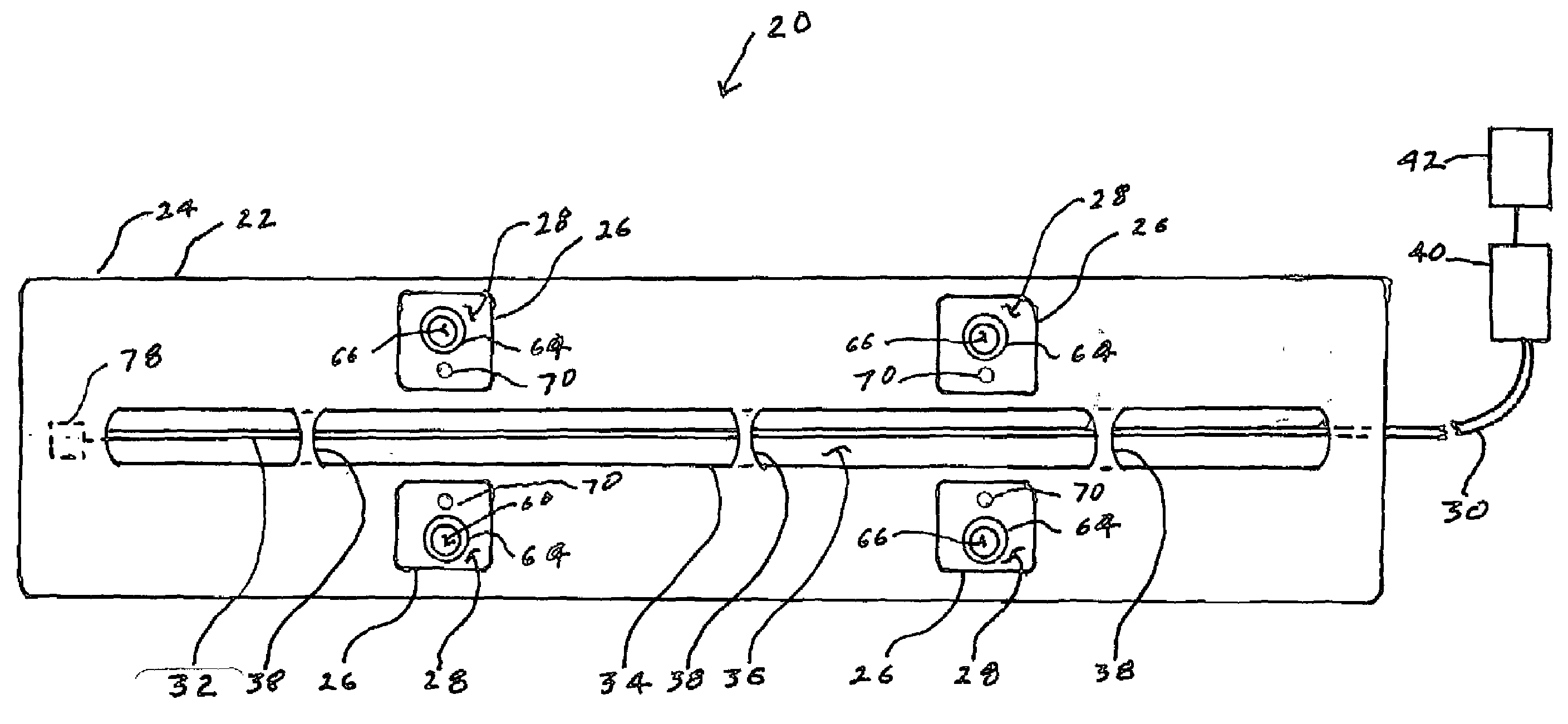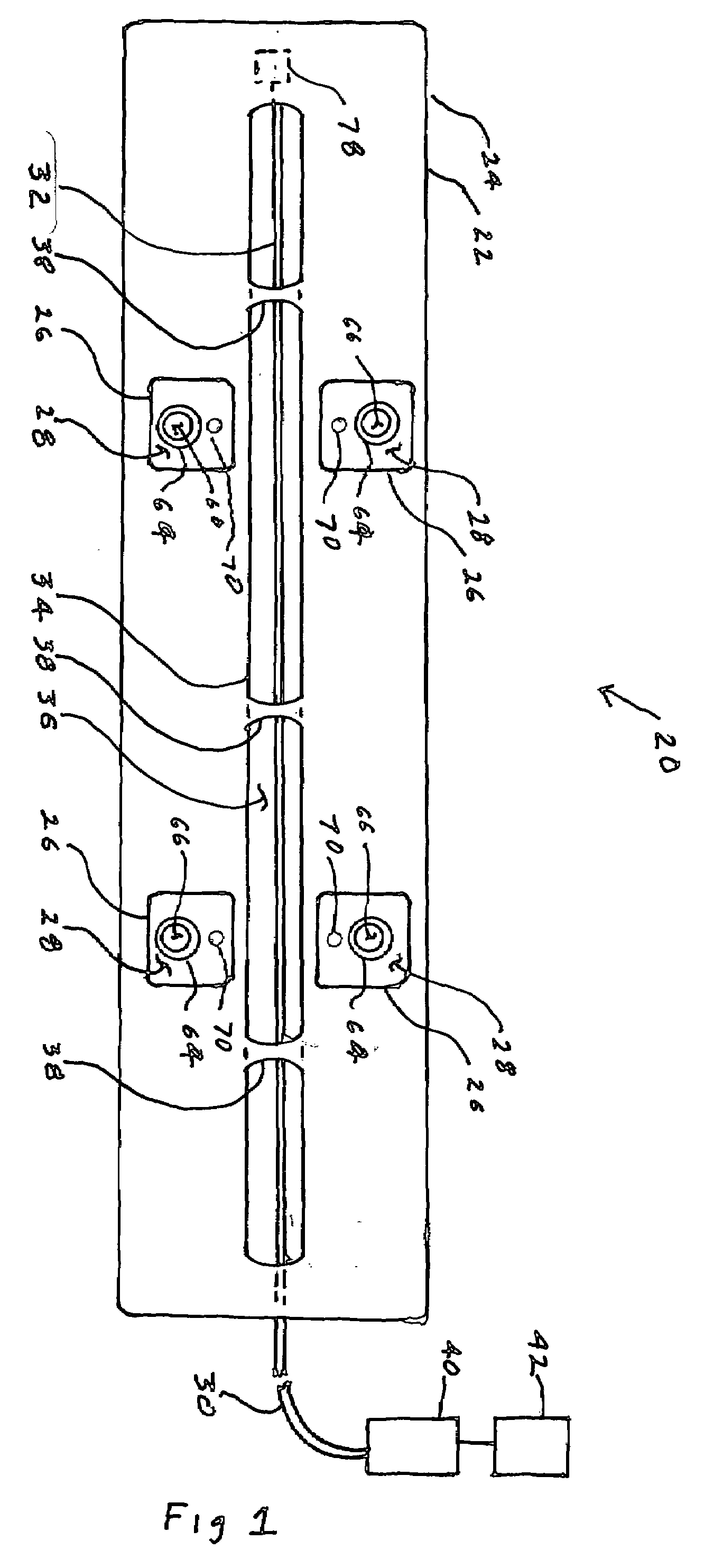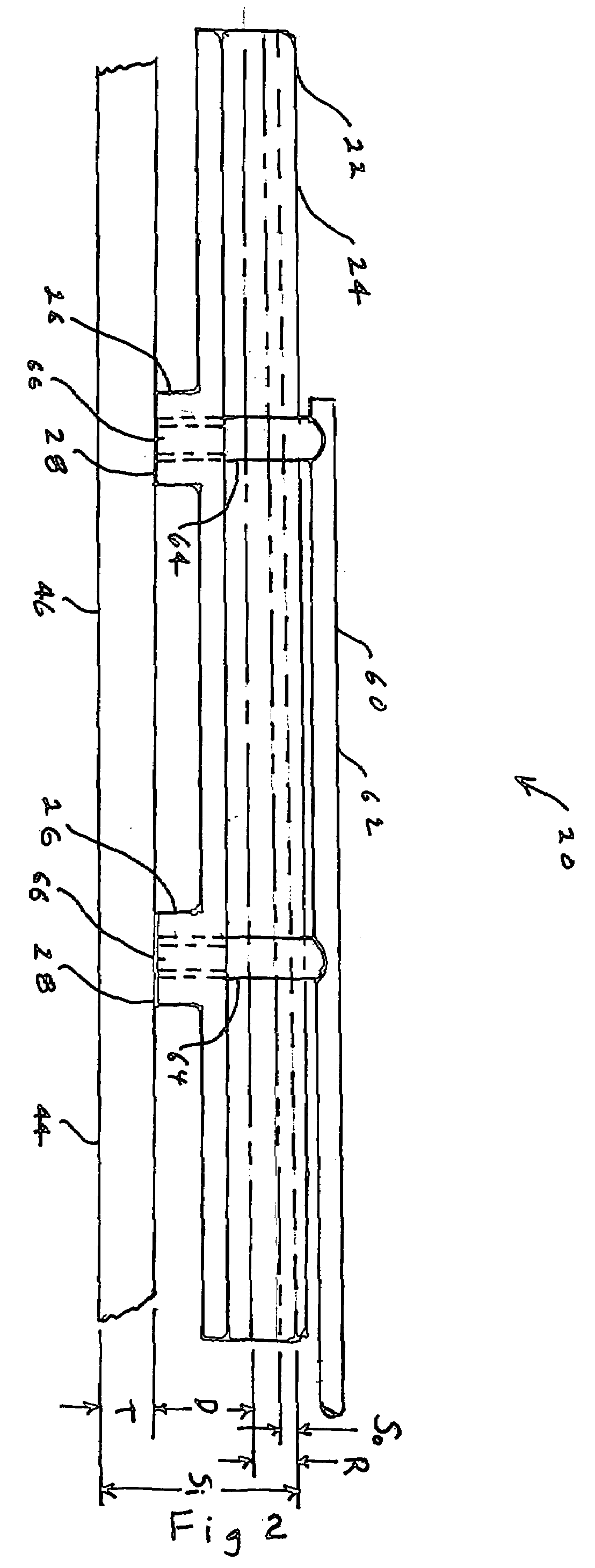Fiber optic tissue ablation
- Summary
- Abstract
- Description
- Claims
- Application Information
AI Technical Summary
Benefits of technology
Problems solved by technology
Method used
Image
Examples
Embodiment Construction
[0044]The present invention is an energy delivery system and method for performing laser ablation procedures using side emitting optical fibers emitting energy from a laser source to tissue to be treated. The system employs a catheter that includes a side emitting long period grating diffuser, in an exemplary version in the range of for example 5-10 cm, imprinted on the distal end of an optical fiber waveguide to make continuous photocoagulation lesions for effective treatments. The side emitting fiber optic high energy delivery platform uniformly emits optical energy over the length of the diffuser. The diffuser is housed in a flexible extended optical reflector channel to increase the energy delivery efficiency of the laser source. A distributed temperature sensor array, for monitoring the in-depth temperature gradient in the tissue during the procedure, is embedded in the diffuser housing, and extends along the length of the tissue under treatment. A series of openings connected ...
PUM
 Login to View More
Login to View More Abstract
Description
Claims
Application Information
 Login to View More
Login to View More - R&D
- Intellectual Property
- Life Sciences
- Materials
- Tech Scout
- Unparalleled Data Quality
- Higher Quality Content
- 60% Fewer Hallucinations
Browse by: Latest US Patents, China's latest patents, Technical Efficacy Thesaurus, Application Domain, Technology Topic, Popular Technical Reports.
© 2025 PatSnap. All rights reserved.Legal|Privacy policy|Modern Slavery Act Transparency Statement|Sitemap|About US| Contact US: help@patsnap.com



